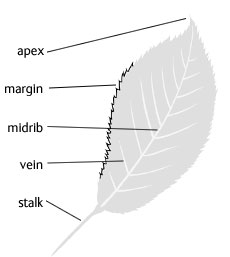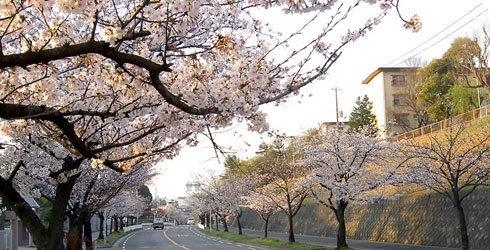Japanese cherries
Japanese mountain cherry - Prunus serrulata
Sargent’s cherry - Prunus sargentii
Oshima cherry - Prunus speciosa
ID check
- Flowers on hairless stalks, in clusters of 2–6.
- Leaf margins with pointed teeth, often with bristle-like tips.
- Leaf stalk hairless.
- Bark mostly dull grey or brown, sometimes peeling to reveal shiny red-brown on the trunk.
Description
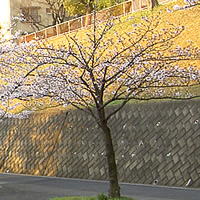
Japanese cherry tree © Masahiro Nishiguchi, Creative Commons Attribution-Share Alike 3.0 Unported
Trees
Up to 15m tall but often shorter.
Leaves
Hairless or downy beneath (depending on the species and variety).
Flowers
White or pink, produced in great quantities. May be single, double or with numerous petals and range from 25–40mm across.
Fruits
Roughly 10mm long, ovoid, purplish-black when ripe but often not produced.
Notes
Japanese cherries have been cultivated in Japan for centuries, and this group is made up of both wild forms and complex ancient hybrids. These include trees collectively known as 'sato zakura' or ‘garden’ cherries, a group of cultivars containing many of the most popular flowering cherries.
Both the spreading and fastigiate (narrowly columnar) varieties are common in the UK.
Japanese cherries are often grafted onto a stock from another species, usually the wild cherry (an abrupt change in the thickness of the trunk marks the point where the graft and stock join).
Images
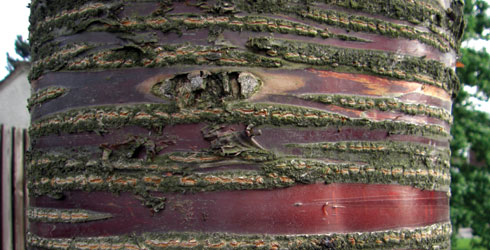
Japanese cherry bark.
© Bob Press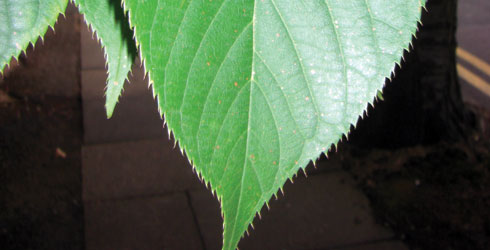
Japanese cherry leaves.
© Bob Press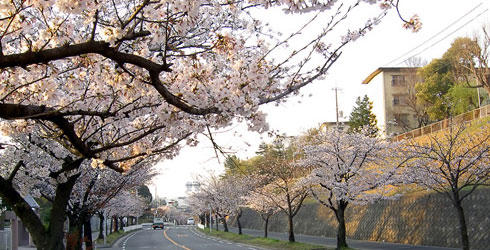
Japanese cherry tree.
© Masahiro Nishiguchi, Creative Commons Attribution-Share Alike 3.0Diagrams
These explain some of the important tree and plant parts mentioned on these factsheets.
Flower

Leaf parts
